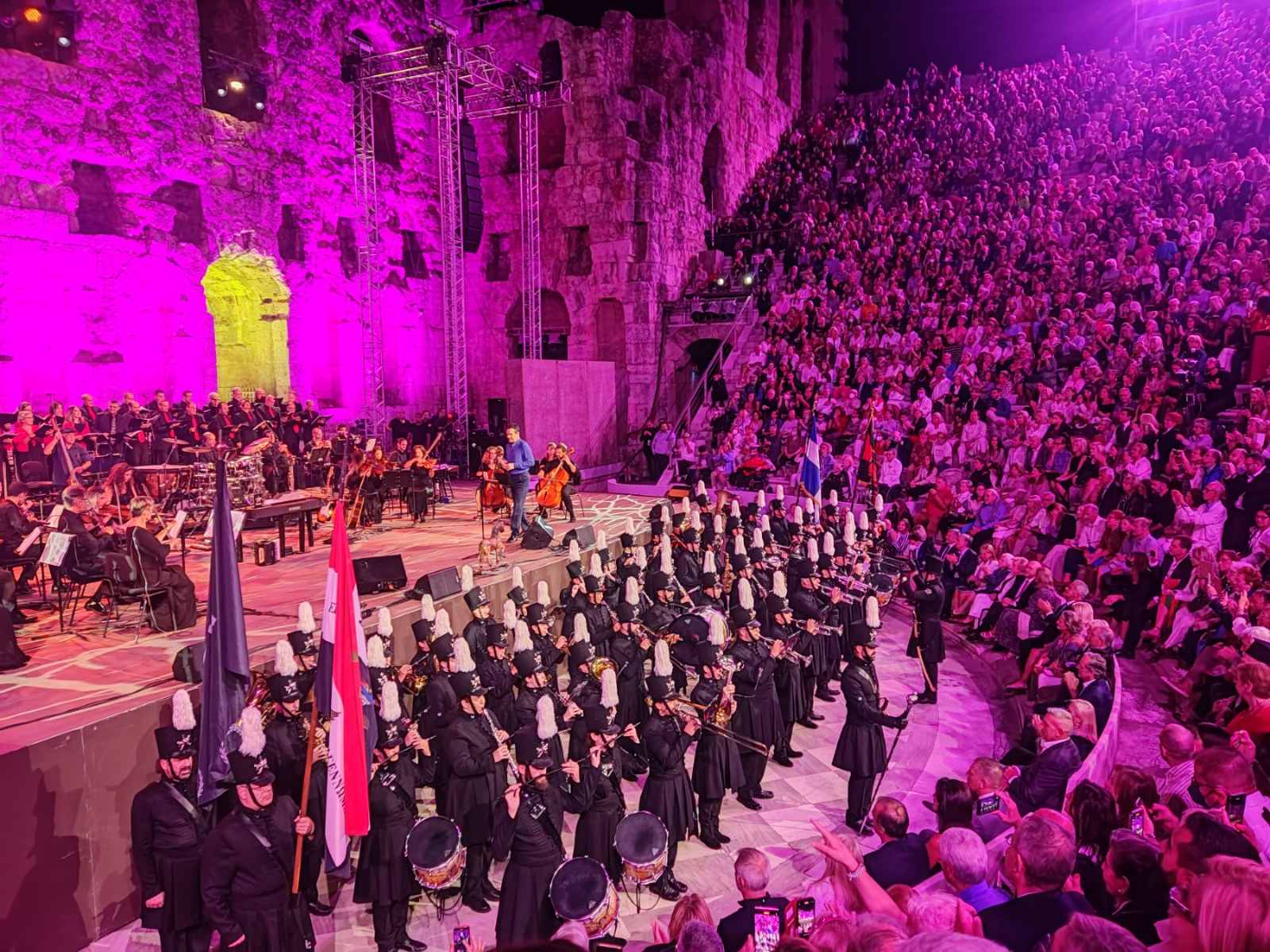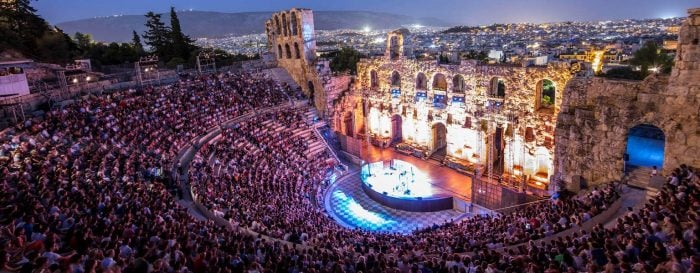
The Band of Messolonghi “Dionysios Solomos”, the orchestra and the Stamatis Spanoudakis choir collaborated at Herodeon dedicated a concert last week to the 1922 Smyrna disaster. Composer Stamatis Spanoudakis invited the band to participate in playing marches from Smyrna as well as the finale piece “Θα’ ρθεις σαν αστραπή” (You will come like lightning).
The Conservatory was packed with 5,000 spectators. Under the starry sky of Athens, the emotional concert in honour of Smyrna moved the spectators, who in turn participated by reciting verses. The performance in Herodeon’s unique space was as well awe-inspiring due both to its magnificent architecture and the imposing Holy Rock of the Acropolis that dominates.
The band swept on stage with their drums and, after lining up in front of the audience, filled the ancient space with the sounds of the “Smyrna Expedition”.
The finale of the concert was simultaneously grand and emotional. Orchestra, choir, band and audience all sang the lyrics of “Θα’ ρθεις σαν αστραπή” . For many, it was a moment that will certainly remain unforgettable.
The Band of Messolonghi “Dionysios Solomos” is a non-profit association based in the Holy City of Messolonghi. Music lovers founded the association in 1992 with the aim of spreading and teaching musical arts in all its forms. They also desired to upgrade the cultural level of Messolonghi and the wider area.
The Herodeon hosts some of the world’s most notable concerts

Sitting beneath the Holy Rock of Acropolis, on the southwest side, is the stunning open-air theatre, Odeon of Herodes Atticus. The wealthy Athenian Herodes Atticus completed it in 161 AD as an ode to his late wife Aspasia Annia Regilla. Today, Athenians know it as Herodeon.
It was originally a three-story stone steep-sloped theatre with an expensive cedar roof wooden roof of Lebanon timber. At that time, it use was as a venue for music concerts with a capacity of 5,000.
It was the third Odeon in Athens and was distinctively Roman in contrast to the nearby Theatre of Dionysos. When Pausanias, the Greek traveller and geographer, visited Athens during the reign of Marcus Aurelius, he described the it as “the finest building of its type”.
The original structure was destroyed 100 years after being built during the Heruli invasion in 268 AD. It become another ruin for a great deal of time, particularly during the Ottoman occupation.
During the German occupation (1941-1944), the Odeon of Herodes Atticus hosted performances by the Athens State Orchestra, as well as performances by the newly formed Greek National Opera with the young Maria Callas, who was then known as Maria Kalogeropoulou.
In the 1950s, Athens decided to fully reconstruct the venue before its grand opening in 1955 as the prime location for the Athens and Epidaurus Festival. Today, the Herodeon remains one of the festival’s main venues. From majestic ballets and arias to ancient Greek tragedies, the Herodeon hosts some of the most unique performances in the world.
Since its reopening, the Herodeon has held some of the world’s most notable musical performances. In the last 60 years, these include Nana Mouskouri, Luciano Pavarotti and Frank Sinatra to just name a few.
See all the latest news from Greece and the world at Greekreporter.com. Contact our newsroom to report an update or send your story, photos and videos. Follow GR on Google News and subscribe here to our daily email!



